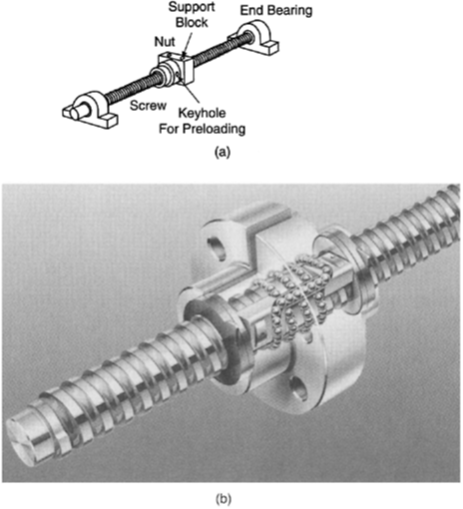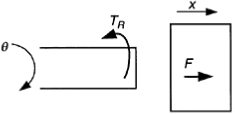SKEDSOFT
Lead Screw and Nut
A lead-screw drive is a transmission component, which converts rotatory motion into rectilinear motion. Lead screws, power screws, and ball screws are rather synonymous. Lead screw and nut units are used in numerous applications including positioning tables, machine tools, gantry and bridge systems, automated manipulators, and valve actuators. Figure shows the main components of a lead-screw unit. The screw is rotated by a

(a) A lead screw and nut unit, (b) A commercial ball screw unit (Deutsche Star GmbH, Scheweinfurt, Germany.
With permission.)

Effort and motion transmission at the screw and nut interface. motor, and as a result the nut assembly moves along the axis of the screw.
The support block, which is attached to the nut, provides means for supporting the device that has to be moved using the lead-screw drive.
The screw holes that are drilled on the support block may be used for this purpose. Since there can be backlash between the screw and the nut as a result of the assembly clearance and/or wear and tear, a keyhole is provided in the nut to apply a preload through some form of a clamping arrangement that is designed into the nut.
The end bearings support the moving load. Typically these are ball bearings that can carry axial loads as well, by means of an angular-contact thrust bearing design.